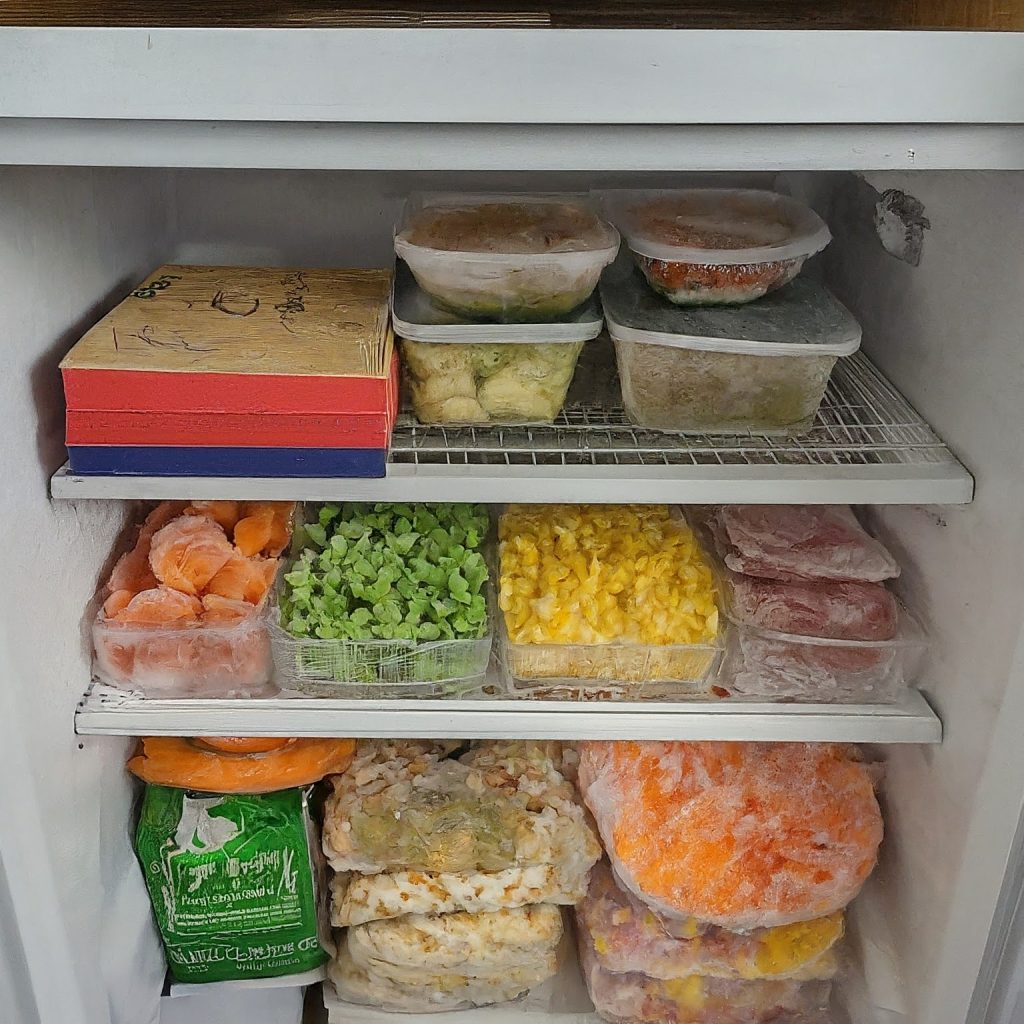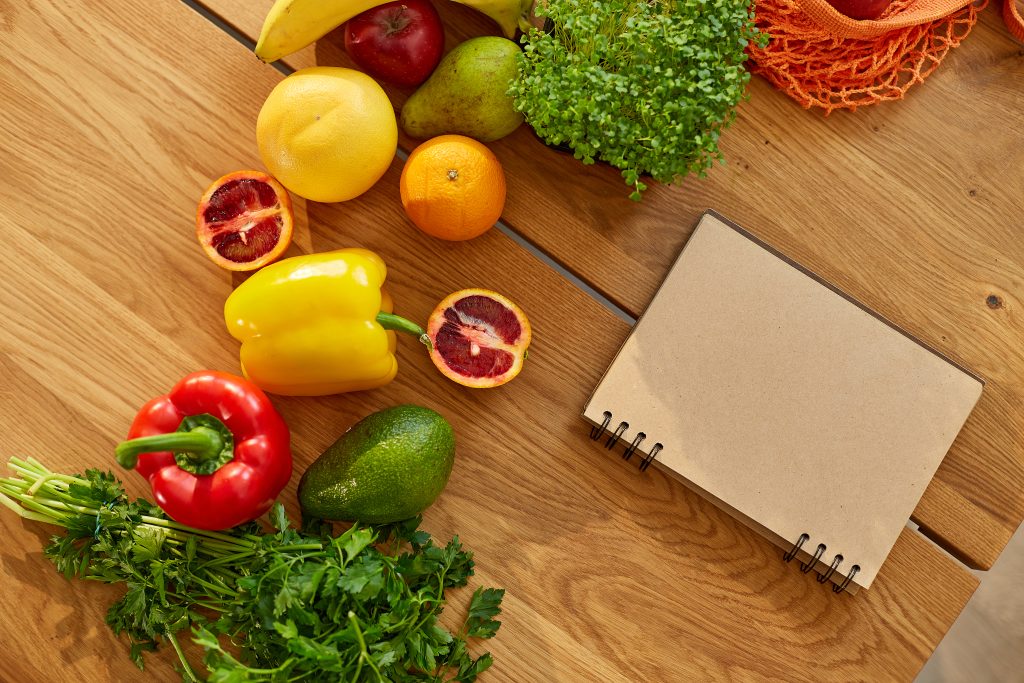This article provides a guide on freezing various foods to prevent waste and extend their shelf life. It covers different food categories suitable for freezing, including fruits, vegetables, herbs, broths, sauces, cooked meals, bread, and cheese. We also look into appropriate freezing methods for each category and offer tips for choosing containers and labelling frozen food.
Foods that freeze well
Here are some foods that freeze well:
Fruits: Many fruits freeze well, especially berries, peaches, mangoes, and cherries.
Just wash, slice, and spread them on a baking sheet in a single layer before freezing.
Once frozen, you can store them in freezer bags for up to a year.
Vegetables: Most vegetables can be frozen, but some freeze better.
Broccoli, corn, peas, and green beans are all good options.
Blanch them first by boiling them for a few minutes, then plunging them into ice water to help preserve their colour and texture.
Herbs: you can freeze fresh herbs in a few different ways. You can chop them up and freeze them in ice cube trays with olive oil or puree them with a little bit of water. Frozen herbs can be used in cooking for up to 6 months.
Stocks and soups: Homemade stocks and soups are a great way to save money and have a healthy meal. Cool them thoroughly, then freeze them in airtight containers.
Frozen stocks and soups can be stored for up to 3 months.
Hot and cold sauces: Most hot and cold sauces, including marinara, pesto, and salsa, freeze well.
Freeze them in ice cube trays or small containers.
Frozen sauces can be stored for up to 6 months.
Chilli and stews: Chilli and stews are hearty meals that freeze well.
Cool them thoroughly, then freeze them in airtight containers.
Frozen chilli and stews can be stored for up to 3 months.
Baked pasta dishes: Lasagna, ziti, and other baked pasta dishes can be frozen before or after baking.
If you freeze them before baking, thaw them completely before reheating.
Frozen baked pasta dishes can be stored for up to 3 months.
Meats: Most meats can be frozen, but some freeze better than others.
Beef, chicken, and pork can all be frozen for up to 6 months. Fish and shellfish should only be frozen for up to 3 months.
Be sure to wrap meat in freezer paper or place it in freezer bags to prevent freezer burn.
Bread: Bread freezes well and is a great way to prevent waste.
Slice bread before freezing, and then thaw it in the toaster or oven when ready to eat it.
Frozen bread can be stored for up to 3 months.
Cheese: Yes, you can freeze cheese, but it’s essential to know how it will affect the texture and which types freeze best.
In general, the cheese will become crumblier and drier after being frozen, making it less ideal for slicing and eating on its own, but perfectly fine for cooked dishes.
Hard cheeses freeze best – cheese like cheddar, parmesan, Monterey Jack, and Swiss hold up well to freezing.
Soft cheeses are trickier – freezing can negatively impact the texture of softer cheeses like brie, camembert, ricotta, and cottage cheese. They may become watery or mushy. That said, you can still freeze them if you plan to use them in cooked dishes later.
Shredded or grated is best – pre-shredded cheese or cheese you grate yourself freezes well.
Minimise air exposure – wrap cheese tightly in freezer paper or place it in a sealed freezer bag to prevent freezer burn.
Overall, freezing cheese is a great way to reduce waste and extend its shelf life; however, it can also affect texture. It’s best for cheeses destined for cooked dishes rather than snacking.
Foods that don’t freeze well
Many foods don’t freeze well for a variety of reasons. Here are some of the most common.
Fruits and vegetables with high water content: when frozen, the water in these foods expands and forms ice crystals, which can rupture the cell walls of the food. As a result, thawed fruit and vegetables can have a mushy, watery texture. Examples include lettuce, cucumbers, celery, watermelon, and tomatoes.
Dairy products: Milk, cream, yoghurt, and sour cream can become grainy when frozen because the fat and water components of these foods separate during freezing.
I did cover frozen ricotta cheese pancakes and cheesecake, and they fasted fine.
Fried foods: Fried foods lose their crispy texture when frozen. They can also become soggy or greasy. You can still freeze them and re-fry them after defrosting.
Sauces and gravies thickened with cornstarch: Cornstarch loses its thickening power when frozen, resulting in thin, watery sauces and condiments.
Eggs (cooked egg whites): Cooked egg whites can become inflexible and rubbery when frozen because the protein in the egg whites denatures during freezing. However, raw eggs and whole-cooked eggs freeze well.
Which container is better for freezing
Choose your freeze day
I suggest you allocate a day when you make meals to freeze. You can then make batches, e.g. bolognese sauce, that you can use for many dishes.
I also suggest using labels to write meal names, dates and cooking instructions so anyone can make this meal.
In summary, freezing is a versatile technique for preserving a wide range of foods. By following the recommendations in this article, you can effectively freeze various items to reduce food waste and enjoy them later.
Remember to consider the suitability of each food type for freezing and employ the recommended methods to ensure optimal quality and texture after thawing.


